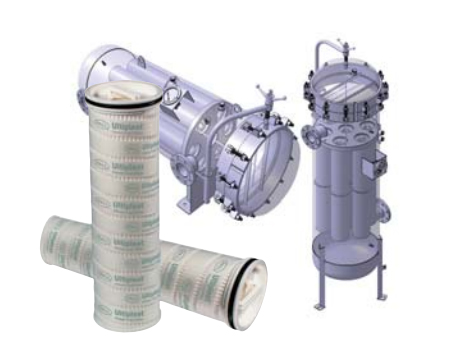Soluções de remoção de partículas e água em aplicações de combustível diesel
Produto: Filtros Ultipleat para sistemas de filtração de combustível diesel
Introdução
Com o aumento dos custos operacionais (por exemplo, custo do uso de combustível, custo de inatividade do equipamento) e legislação ambiental rígida (por exemplo, emissões de Gases), o setor de mineração enfrenta desafios difíceis ao operar frotas grandes de motores a diesel. Para garantir excelente desempenho e confiabilidade do motor, contaminação de partículas e água no combustível diesel precisam ser controladas até limites aceitáveis.
Os filtros de combustíveis internos não são projetados para suportar níveis altos de contaminação. Portanto, para evitar obstrução prematura e trocas frequentes dos filtros instalados, a limpeza do combustível deve ser controlada por toda a cadeira de suprimento do combustível. A Filtração de combustível diesel para mineração Filtração de combustível diesel para mineração deve ser um investimento de toda a unidade, gerenciada com tecnologias avançadas de filtração de partículas e água, desde o ponto de entrega, ao longo do armazenamento, até o bocal de dispensação.
O impacto da contaminação por partículas em componentes e sistemas de motores a diesel
Há três tipos de falhas do sistema de injeção de combustível do motor que podem ser atribuídas à presença de contaminação de partículas:
• Falhas mecânicas pelo desgaste do componente e que bloqueiam o movimento do componente
• Falhas elétricas (geralmente como queima do solenoide do injetor) pela obstrução com sedimentos ao redor da haste da válvula de gatilho, restrição de movimento
• Falha de desempenho pelo bloqueio dos bicos injetores e alteração dos padrões de jato do injetor
Sistemas de injeção de combustível do motor a diesel
À medida que a tecnologia de injeção de combustível de motor progrediu, progrediu também a sua sensibilidade à contaminação. Por isso é tão importante remover a água do combustível diesel, da maneira correta.
Unidade injetora controlada eletronicamente (Electronically Controlled Unit Injectors, EUIs)
As aberturas dos bicos injetores das EUIs possuem 6 a 7 µm de diâmetro. Essas aberturas podem ficar bloqueadas ou sofrer erosão devido à contaminação de partículas à medida que o óleo diesel passa por elas em altas pressões. O formato do bico pode ser mudado ou os padrões de jato podem ser alterados, impactando negativamente no desempenho do motor, na forma de potência reduzida e economia de combustível ruim.
Sistema Common Rail sob alta pressão (High Pressure Common Rail, HPCR)
A tecnologia do sistema HPCR oferece potência e eficiência de combustível melhoradas e emissões de escape menores. Para alcançar esses resultados, os sistemas HPCR operam em pressões que excedem 2000 bar e têm aberturas de bico injetor na faixa de diâmetro de 2 a 3 µm. Isso exige um combustível diesel 30 vezes mais limpo do que o que é aceitável para EUIs padrão e mais de 100 vezes mais limpo do que é geralmente dispensado na bomba. Esse nível de limpeza não pode ser obtido somente com a filtração a bordo; filtração complementar e filtração no ponto de abastecimento são necessárias.
Como definir os níveis de limpeza de combustível aceitáveis
Embora a limpeza do diesel possa variar significativamente por toda a cadeia de abastecimento de combustível, o fabricante do motor define a limpeza típica do combustível que entra com um nível de limpeza de 22/20/17, de acordo com o ISO 4406. Para sistemas de injeção de combustível EUI, os Fabricantes de Equipamento Original exigem um nível de limpeza de combustível de 18/16/13, de acordo com o ISO 4406. Os novos motores HPCR exigem níveis de limpeza do combustível diesel de até 12/9/6 conforme o ISO 4406. Assim, é útil investir na remoção da água dos sistemas de combustível diesel como o seu.
Quão sujo realmente está?
Você realmente precisa de um sistema de filtração de diesel no estado da arte? Para colocar isso em uma perspectiva mais prática, a tabela abaixo mostra a quantidade de contaminantes e o volume de água equivalentes que seriam bombeados em um ano em uma mina grande que utiliza 137.000 litros de diesel/dia, com diversos níveis de contaminação de combustível.
